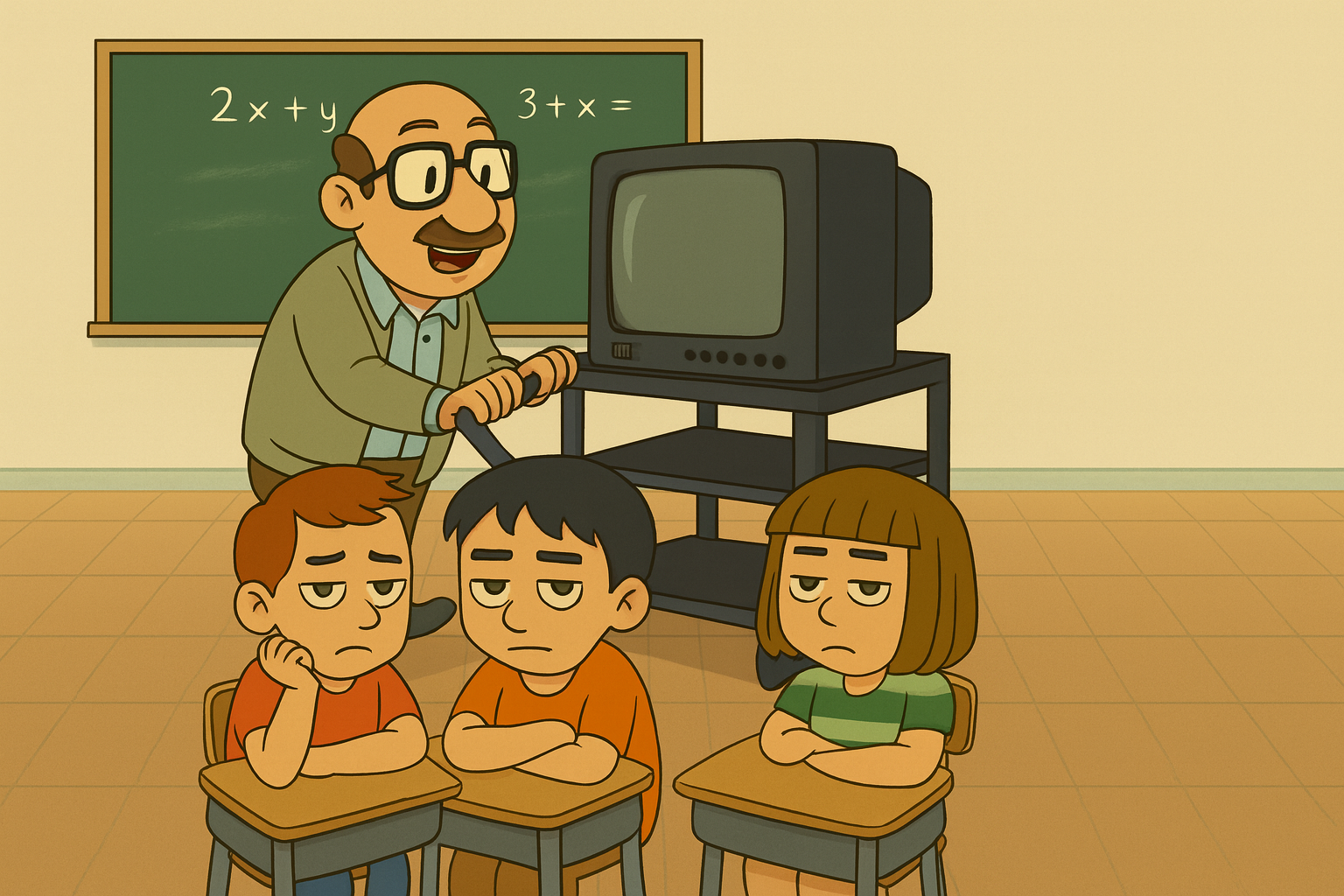For over a century, education has undergone significant changes—particularly in how technology supports learning. From projectors and radio to personal computers and tablets, each wave of edtech promised to close achievement gaps and spark student interest. Yet despite decades of investment, these tools rarely lived up to their potential.
To better understand this shift, let’s explore some of the core issues edtech has faced in classrooms, and how Dreambook’s thoughtful use of AI could offer a more effective and engaging path forward.
Tools Without Imagination
Mid-20th century devices like overhead projectors, film strips, and even B.F. Skinner’s “teaching machines” (1950s) introduced innovation in delivery but reinforced memorization rather than critical thinking¹. Later, personal computers in the 1980s brought interactive programs like Reader Rabbit and Oregon Trail, yet most software remained drill-based². Teachers often faced the burden of learning new systems while still meeting curriculum goals.³
Unequal Access and Training Gaps
By the 1990s, a clear digital divide emerged. Wealthier schools gained labs, internet access, and IT support, while underfunded districts struggled with outdated tools⁴. Teacher training lagged behind, leaving many without the preparation needed to integrate technology effectively.⁵
Tech Adoption Outpacing Pedagogy
The 2000s introduced SmartBoards, tablets, and Learning Management Systems like Moodle and Blackboard. These systems distributed content but rarely transformed learning itself⁶. Too often, schools embraced technology for novelty’s sake—a pattern researchers call “solutionism.”⁷
Adaptive, Responsive, and Creative AI
Artificial intelligence represents a true departure. Modern large language models can personalize instruction, adjust difficulty, and provide real-time feedback at scale⁸. Unlike earlier tools, AI also enables creative exploration: generating story ideas, simulating experiments, or engaging students in project-based learning. It can model higher-order thinking, not just reinforce skills.⁹
Challenges remain around privacy, bias, and over-reliance on automation. Yet for the first time, education has a toolset capable of addressing personalization, scalability, and instructional alignment. At Chronicle Creations, we believe Dreambook is one of those tools—empowering teachers and students alike, both in classrooms and at home.
References
References
- B. F. Skinner. Teaching Machines: From the experimental study of learning come devices which arrange optimal conditions for self-instruction. Science, 128(3330), 969-977. https://doi.org/10.1126/science.128.3330.969
- Papert, S. (1980). Mindstorms: Children, Computers, and Powerful Ideas. Basic Books.
- Cuban, L. (2001). Oversold and Underused: Computers in the Classroom. Harvard University Press.
- Warschauer, M. (2004). Technology and Social Inclusion: Rethinking the Digital Divide. MIT Press.
- Selwyn, N. (2011). Education and Technology: Key Issues and Debates. Continuum International.
- Watson, W. R., & Watson, S. L. (2007). An argument for clarity: What are learning management systems? TechTrends, 51(2), 28–34.
- Reeves, T. C. (2000). Socially responsible educational technology research. Educational Technology, 40(6), 19-28. http://www.jstor.org/stable/44428634
- Holmes, W., Bialik, M., & Fadel, C. (2019). Artificial Intelligence in Education: Promises and Implications for Teaching and Learning. Center for Curriculum Redesign.
- Williamson, B., & Eynon, R. (2020). Historical threads, missing links, and future directions in AI in education. Learning, Media and Technology, 45(3), 223–235. https://doi.org/10.1080/17439884.2020.1798995

 All Posts
All Posts
